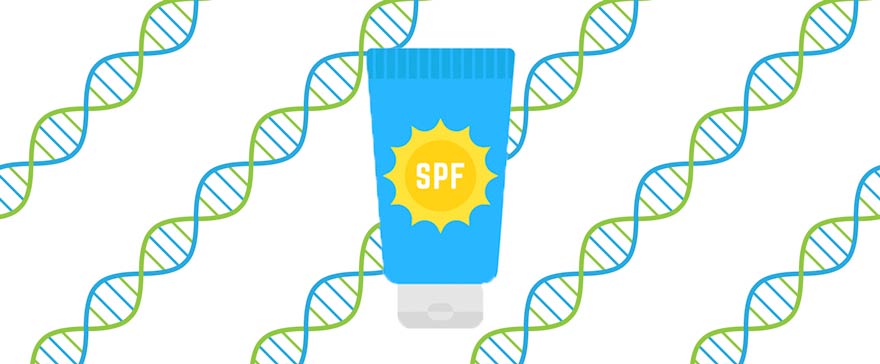Why do some people seem to be resistant to skin cancer, while many of us (who regularly visit SkinCancer.org) seem prone to it?
Turns out there’s a gene that’s at least partially responsible, according to a 2016 study.
When you expose your unprotected skin to UV radiation from the sun, DNA damage starts in skin cells almost immediately. If you have a healthy version of this gene, called the UV radiation resistance-associated gene (UVRAG for short), it rushes in to repair as much of the damage as possible.
The gene is what’s known as a tumor suppressor, which means just what it sounds like: It helps stop cancer before it can start. In people who have a mutation of this gene, though, or low levels of the gene, it can’t clean up nearly as much of the damage. So those people are at higher risk of developing melanoma or other skin cancers. The study authors tested 340 melanoma patients and found that lower levels of the protective gene were linked to lower survival and more advanced metastases.
The gene was discovered in the early ’90s as a factor in a UV light-sensitivity disorder called xeroderma pigmentosum, which puts patients at extremely high risk for skin cancer. [Read our fascinating article on a special nighttime summer camp for kids who must avoid sunlight.] Now we know this gene plays a role in everyone’s odds of getting skin cancer.
Even if you have this protective gene, it can’t repair all of the damage the sun causes. Researchers hope this discovery may eventually lead to drugs that could help stimulate better repair of UV-damaged skin cells, says Yongfei Yang, a research associate at The University of Southern California Keck School of Medicine and lead author of the study.
Meanwhile, it’s still crucial to protect yourself from the sun — every single day.





